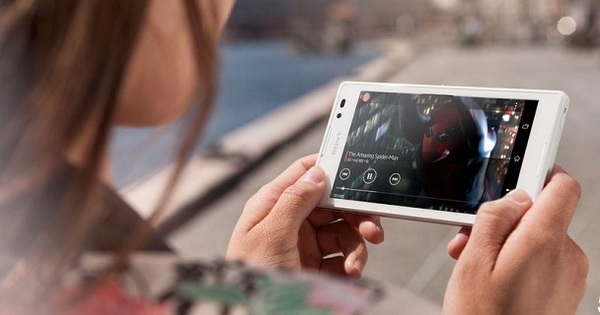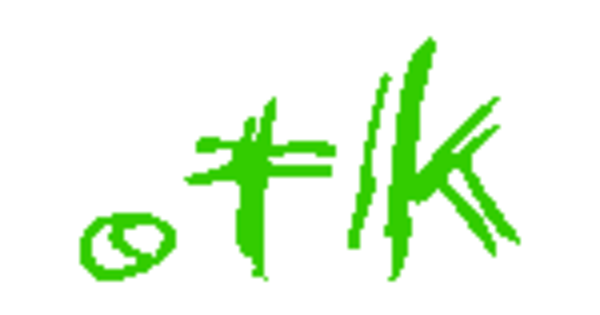When you think of graphic design, you think of Photoshop. Adobe's program comes with a hefty price tag and you may not want to spend that if you want to design a flyer for a flea market, a birthday party, etc. once in a while, for example. create flyers in word.
Tip 01: Template
In this article, we are going to make a flyer for a party and we will do it from scratch, so that you get to know elements of such a graphic design in Word. However, if you are in a hurry, it is also good to know that you can also make such a flyer very easily using a template. In that case, Microsoft has already done the work for you. All you have to do is fill in the information and optionally replace some images, and you're done with your flyer. Of course you don't learn from designing, but it can save you if you need something within half an hour. You can find the templates by clicking in Word on File / New and then flyer typing in the search field (you can of course search for whatever you want, invitation or menu can also). In the steps below, we will make a flyer ourselves, assuming that you already have the information you want to process in your head.
Within Word you will already find thousands of templates, but Microsoft has many more templates, which you will find on this website. Click on a template you want and then on To download. Open the downloaded file and you will immediately have the flyer in front of you.

Tip 02: Format and orientation
Before we actually start designing our flyer, it is important that we know how big the flyer should be and what the proportions are (landscape or portrait). It's not like Photoshop where you literally specify a document size, but by clicking . in the ribbon Layout / Format you can indicate which paper size your document should have (these are predefined sizes). This does not mean that you also have to have this size of paper in your printer, but you do know how large your design will be on the paper. Under the heading Layout do you find the option Orientation, which allows you to specify whether the document is portrait or landscape.
 Keep margins in mind when printing on a full page
Keep margins in mind when printing on a full page Tip 03: Margins
It would of course be a shame if you design a beautiful flyer and part of it falls off during printing because you placed text too close to the edge. Or that the distance from the edge is so great that an unnecessary amount of space is lost. In that case, take a look at the margins. By default, a Word document has a large margin set, but you can easily adjust that. Click in the ribbon on Layout and then margins. There you specify exactly how far the content of your document should be from the edge. Incidentally, this is especially relevant when you are going to print on a full page. If you print an A6-sized flyer on an A4 sheet, the margins don't matter that much.

Tip 04: Insert table
You can now roughly organize your flyer in two ways: with text boxes and with tables. The advantage of a table is that you can align everything evenly with the help of rows and columns. The downside is that the columns offer less flexibility. To insert a table, first determine how many rows and columns you want. In this example we are going for two columns and three rows. click on Insert in the ribbon and then Table. Move your mouse over the grid until you have the desired table layout and left click. You can now drag the line in the middle to change the proportions between the columns. Similarly, drag the lines between the rows to make the rows higher or lower. This way you determine exactly where which element of your flyer will be placed. You can also merge cells by selecting them, right-clicking and choosing Merge cells. When you right click on the top left corner of the table, then click Cell properties, you can change properties such as border or no border, background color, cell margins etc.

Tip 05: Insert text box
When you use text boxes instead of a table, you have to be much more careful that all the boxes align, but you are much more flexible in where you place elements. Word also has some handy formatting options built in, which is why we'll choose text boxes in the rest of this article. You can insert a text box by clicking Insert / Text Box. You can choose a simple text box, which you can then drag, rotate, etc. exactly in the right place. When you click on a text box and then on the icon with the semicircle that appears next to it, you can specify how the text should wrap (with this you determine whether text that you type in the flyer wraps around this box, or whether this box simply lies over it and has no influence on the text. If you right-click on the box, you will see three buttons next to a drop-down menu for adjusting the style, padding, and contour.
For this flyer we make a hit in one fell swoop by inserting a special text box via Insert / Text box / Facet sidebar right. A nice sidebar is immediately inserted with a graphic element, which immediately looks slick.
 With the Text Wrapping function you specify how the text should wrap around the inserted image
With the Text Wrapping function you specify how the text should wrap around the inserted image Tip 06: Insert image
Inserting an image actually works just like inserting a text box: you can control exactly where the image goes and how the text responds to it. To insert an image, click Insert / Pictures to upload an image from your hard drive. Or click Online images to pick an image directly from Microsoft's search engine. When you have inserted the image, you cannot just drag it around yet, you must first indicate that the image is freestanding. To do this, click on the image and the semicircle icon. Choose an option under the heading With text wrapping and experiment a bit with the effect of the options on your other elements. You can now freely move and scale the image. You now have all the elements you need to design your flyer. When entering texts, make sure, for example, that you assign headings the correct style (Heading 1, Heading 2, Title etc.) via the tab Home / Styles.

Tip 07: Choose color scheme
When you have placed the image(s) in the right place and filled in the texts you want to use, you may wonder if the colors you have used (if you have already done so) go well together. You don't have to worry about that at all, because Word offers you a number of color schemes that fit perfectly together. click on To design and then the button Colors. You will see a large number of color schemes and when you hover your mouse over them you will get a preview of what the color scheme will look like in your document. This is also one of the reasons why it is important to assign formatting styles to your texts, as indicated in the previous step. If you don't, all text for Word will be the same and color schemes (and also the designs from the next step) will have virtually no effect.

Tip 08: Choose a design
Finally, you can add an extra professional effect to your flyer by applying Word's design styles. This does not change the color scheme that you have just chosen, but Word plays with things such as line spacing, font size, but also, for example, lines between the relevant text elements (those lines will have a color that comes from the color scheme you have chosen) and so on. . That way, with just a few mouse clicks, you can instantly give a text that looks quite ordinary a very professional look. You do this by clicking To design and then on a style above the cup Document format. Again, you can preview what the style looks like by moving your mouse over it before making a choice. Note that the style is applied to the entire document, not to the text box or text you selected. When you have chosen the desired style, your flyer is ready to print. You can send the flyer via File / Save As You can also save it as a PDF document so you can send it to a copy shop or digital print shop for printing.


